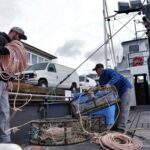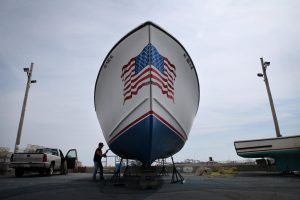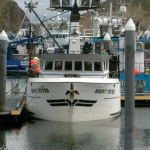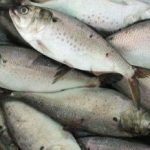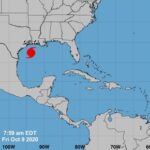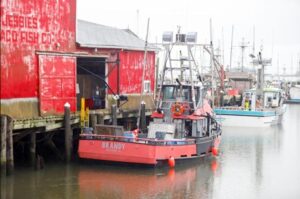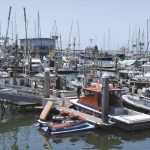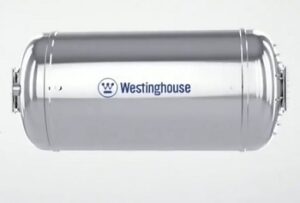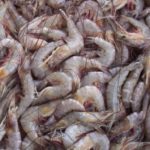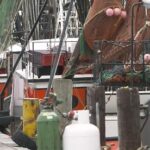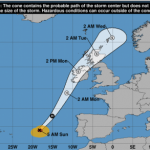Tag Archives: nitrogen and phosphorus
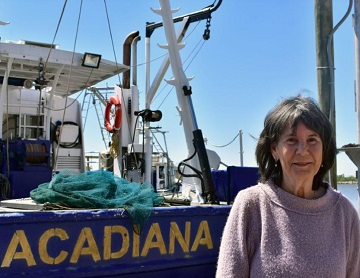
A lifetime of research links Gulf of Mexico ‘dead zone’ to Midwest fertilizer runoff
In the summer of 1985, Nancy Rabalais set sail on a research vessel into the Gulf of Mexico — and into the scientific unknown. Over nearly four decades, Rabalais has become a giant in her field. She has completed hundreds of interviews with journalists, presented a TED Talk, testified to Congress multiple times, mentored countless students at LSU and published nearly 160 studies. Now 73, Rabalais said she doesn’t plan to go on the research cruises anymore due to her age and health issues. She remains engaged in her work, even as she trains a new generation of scientists to take over. >click to read< 10:04
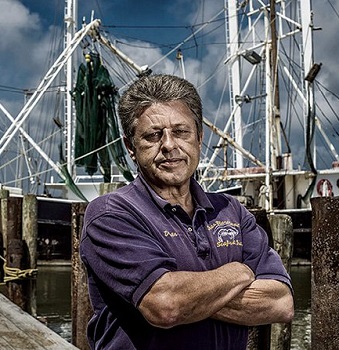
The Dead Zone – Nothing Here Gets Out Alive
With an easy drawl, Dean Blanchard, the owner of Dean Blanchard Seafood in the barrier-island town of Grand Isle, Louisiana, makes an understated observation: “There’s a reason they call it a dead zone. When the dead zone comes, everything’s dead. We can’t catch dead stuff. We’re in the live stuff business.” What Blanchard is talking about is the Gulf of Mexico “dead zone,” an enormous area in which, every spring, an overgrowth of algae and other vegetation absorbs dissolved oxygen from the water and kills all animal life. “This year,” Blanchard says, “we had shrimp jumping on the beach, committing suicide, trying to get out of the water because there’s no oxygen.” The result is an economic disaster. To find live shrimp, fishers have to ply their boats as far as fifty miles from shore. “With the price of fuel, you don’t want to go too far,” Blanchard says. His company’s annual haul has declined from twelve million pounds of shrimp a year to under five million. He used to employ sixty workers—now he’s down to thirty. >click to read< 11:49
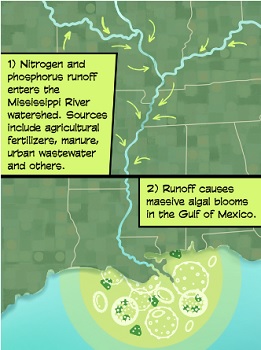
Midwestern Farm Runoff Creates Headache For Louisiana Shrimpers
“We’re not catching no large shrimp,” said Olander, who largely blames worsening environmental conditions. “There’s no explaining this here other than it’s something’s wrong with our water.” Olander grabs his phone to elaborate. He pulls up a picture of the Gulf water his cousin Douglas, also a fisherman, took from the deck of his boat earlier this summer. “That’s that green slime,” he said, pointing. “ Audio, >click to read< 11:43
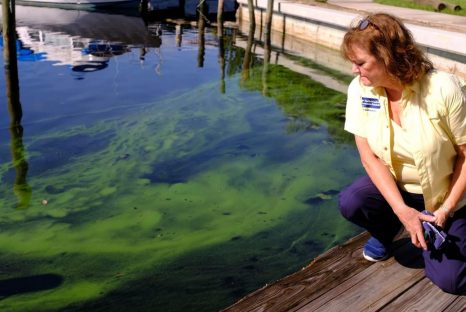
Red tide and green slime: Florida faces epic statewide fight with algae
We may smell it first, warned environmentalist Rae Ann Wessel. She was right. Along a wall of mangroves, the stench last week advertised of something to be buried. It was a greeting to Fort Myers’ algae horrors. Green slime and red tide are invading the Fort Myers region’s inshore and offshore waters, slaughtering marine life and threatening a more sinister outcome: Toxins produced by a green-slime variety may link to neurodegenerative illnesses, say some scientists who are investigating. For decades, Florida’s watery environment has been sickened by pollution from septic and sewer systems, storm water and fertilizer from landscaping and agriculture. That “nutrient” pollution, with nitrogen and phosphorus flavors,,, Video, >click to read<14:24
Price spikes for jumbo shrimp blamed on Gulf of Mexico dead zone
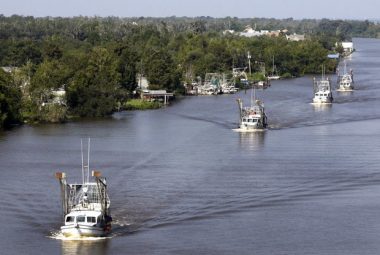 Every spring and summer when the low-oxygen dead zone forms off Louisiana’s coastline, the price of jumbo shrimp briefly spikes, affecting Gulf of Mexico fishers, consumers and seafood markets, according to a new study published Monday (Jan. 30) in the Proceedings of the National Academy of Sciences. And the price for smaller shrimp generally falls. The positive effect of the price increase on jumbo shrimp for Gulf commercial shrimpers are fleeting, however. That’s because the rise often triggers increased imports of large shrimp from foreign producers, including farm-raised shrimp, which quickly drive down prices. The dead zone is an area of low oxygen — with levels of oxygen at or below 2 parts per million — that scientists define as hypoxia. Freshwater rich in nitrogen and phosphorus from Midwest farms and from nutrient-rich sewage from cities and rural areas enters the Gulf each spring and summer, forming a freshwater layer over the Gulf’s saltier sea water. Read the full story here 18:41
Every spring and summer when the low-oxygen dead zone forms off Louisiana’s coastline, the price of jumbo shrimp briefly spikes, affecting Gulf of Mexico fishers, consumers and seafood markets, according to a new study published Monday (Jan. 30) in the Proceedings of the National Academy of Sciences. And the price for smaller shrimp generally falls. The positive effect of the price increase on jumbo shrimp for Gulf commercial shrimpers are fleeting, however. That’s because the rise often triggers increased imports of large shrimp from foreign producers, including farm-raised shrimp, which quickly drive down prices. The dead zone is an area of low oxygen — with levels of oxygen at or below 2 parts per million — that scientists define as hypoxia. Freshwater rich in nitrogen and phosphorus from Midwest farms and from nutrient-rich sewage from cities and rural areas enters the Gulf each spring and summer, forming a freshwater layer over the Gulf’s saltier sea water. Read the full story here 18:41

































